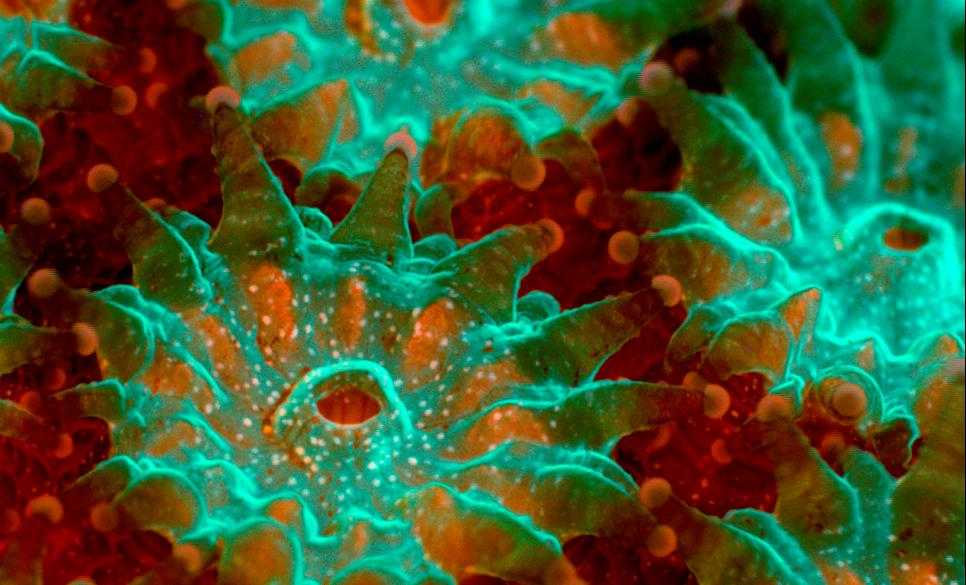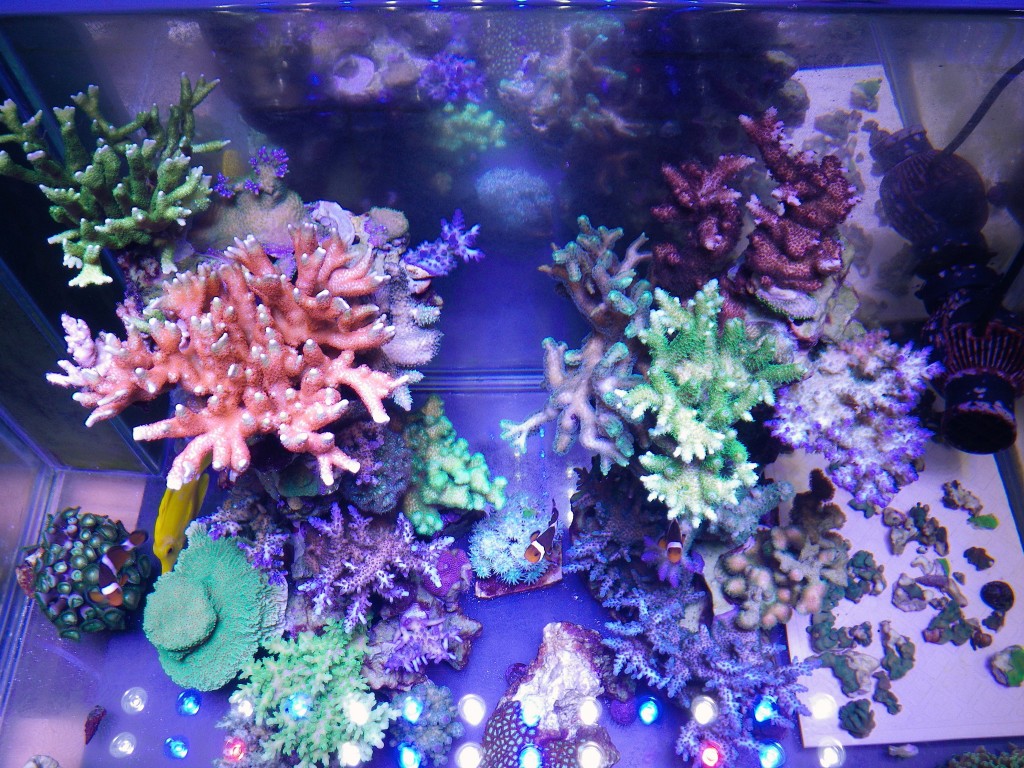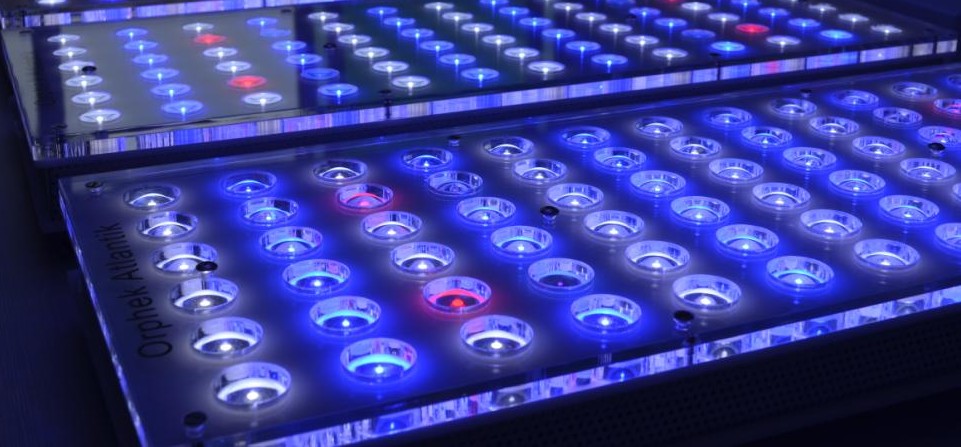CORAL COLOR AND WHAT IS REQUIRED TO MAINTAIN IT
Up to 90% of SPS coral’s nutritional needs are obtained by the food produced by Zooxanthellae.

These dinoflagellates are single celled algae that reside and grow within the coral’s tissue. Several million of these algae cells live in just one square inch of a coral’s tissue. These microscopic algae use energy from sunlight to make food for the coral through photosynthesis. This is accomplished by converting carbon dioxide into oxygen and carbohydrates (sugars). This process requires plenty of sunlight and is why coral colonies are only found in clear, shallow water. Hard corals are very dependent on Zooxanthellae and will not survive long without them.
The Zooxanthellae are also what determine more than 90% of a coral’s color. Without Zooxanthellae, the coral’s tissue would appear white or translucent. For a coral to maintain its colorful hues, correct lighting intensity and spectrum must be given to them. In addition to lighting, different colored corals use different major and minor trace elements to maintain their coloration and these elements must be provided in our closed systems if we wish to continue to observe their colorful beauty. Many reef aquarists have observed that after bringing home their beautiful pink Acropora, its color rapidly changed and this is due to lack of the proper elements needed to maintain the pink, or any other color for that matter.

We will identify the numerous elements and some of their benefits to corals.
- Iodine and Halogen – Two elements that promote the color in pink corals.
- Potassium and Boron – Promotes the red in red corals.
- Iron, Manganese, Cobalt, Copper, Aluminum, Zinc, Chrome and Nickel promote the green coloration in green corals. These are all considered light metals and should not be confused with heavy metals.
- The above elements provide more than just color stability, but for this article we are just focused on maintaining our coral’s color.
- Amino acids – Amino acids consists of carbon, nitrogen, oxygen, and hydrogen. Amino acids are important in nutrition as they serve as the building blocks for protein. Amino acids cannot be created from other compounds and must be taken in as food or vitamin supplements. Marine phytoplankton is a good food source that is rich in amino acids.
It must be understood that many of these elements are depleted quickly due to their high oxidative abilities and reactions with organic materials and removal by protein skimming and/or carbon and chemical filtration. Therefore, they must be supplemented on a regular basis by doing weekly water changes with a good quality salt such as Seachem’s Aquavitro Salt and/or by using supplements specifically developed for coral coloration such as Red Sea’s Color Program.
A clean low nutrient tank also provides a vital role in the actual color of your coral. Efficient protein skimming, controlled feeding, and bioload will all help significantly in increasing water quality.
Fortunately, the lighting problem is solved by the use of Orphek LED lighting systems which provide the ideal intensity and spectrum for maintaining good coral health.
As to the needed elements, there are several manufacturers that market these products. Red Sea, Tropic Marin, and Brightwell are highly recommended.
